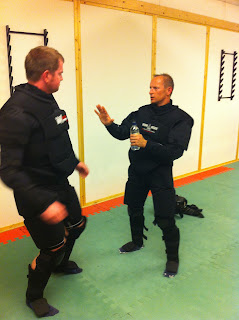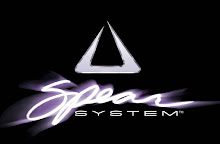This weeks Personal Defence Readiness™ Class focused on giving students a healthy appreciation on how, what we hold in our hands, effects the way we reflexively flinch in an ambush moment, of a street confrontation.
Although many students of S.P.E.A.R. already have discussed these effects, it's always good to have a physical experience of just how tactics are effected, in real time; force-on-force.
There is a scientific principal referred to as the 'Crossed Extensor Reflex'.
If you aren't familiar with it, here's what happens...
Firstly, if we are surprised, think sudden, unexpected street attack, our survival system causes us to flinch, using a Withdrawal Reflex, which aims to protect the brain principally, and often negates, deflects and reduces damage from the attack. This Reflex is 'Pure Physiology' as it bypasses the Cognitive brain, it's the fastest reaction we have. Remember a time you touched a hot cooker, your hand withdrew without any thought process, it was a pure instinctive behaviour, that was effective due to it's speed, which was due to not having to waste time thinking or making decisions. The thought process happened after, not during.
However, it gets interesting if you are holding an object in your hands when you flinch.
Normally the flinch aims to protect your head (or other targeted area) by use of the forearms and hands.
If though you flinch whist holding say a pint of beer (worth protecting right!), research has found how the hand grips the object even tighter and keeps the object in the same relative position.
We think that we might drop the object... but most of the time, we don't!
Have a look at the photo below, where a baseball bat breaks and flies into the crowd! Everyone is flinching but take a look at the people holding objects.
Why this happens we can only speculate. Perhaps it's a protective reaction that's evolved over thousands of years as hunter-gatherers, so that if we are startled when carrying a baby, we hold on to it, whilst the other arm tries to push away the danger.
Normally, the only time we will drop a held object, will be if you have enough time to allow a cognitive thought process to happen, which if it's a true ambush, is very unlikely!
Tony Blauer and his S.P.E.A.R. System™ research has greatly influenced tactics in many professions, that have to deal with frontline violence to staff, such as Police, Nurses, Care Workers, Security Operators, etc. Often staff have to hold objects as part of their job, whether it be a clipboard, a torch, a pair of handcuffs, so you can imagine how taking on board this research into their training has greatly improved their safety.
In short, if somethings pings on your threat assessment radar, get stuff out of your hands ASAP!
In the photos below, you can see Max and Kevin at our PDR weekly class, doing some drills that explore different evolutions of the startle-flinch, whilst holding a bottle. The flinch expresses differently each time due to various factors. These factors include the level of the Good Guy's awareness at any given time, but also on the level of the Bad Guy's speed, aggression and how close they are to the Good Guy.
It was great to see the guys leaving their ego at the door, and allowing themselves to simply 'experience' the Crossed Extensor Reflex effects naturally and organically when flinching from a surprise attack.
Training 'Off-Balance - On Purpose', allows for greater 'relative calm' should you ever experience this on the Street, as well as giving them a deeper level of understanding of the cross extensor reflex and its impact on combative tactics.
Stay Safe!








No comments:
Post a Comment